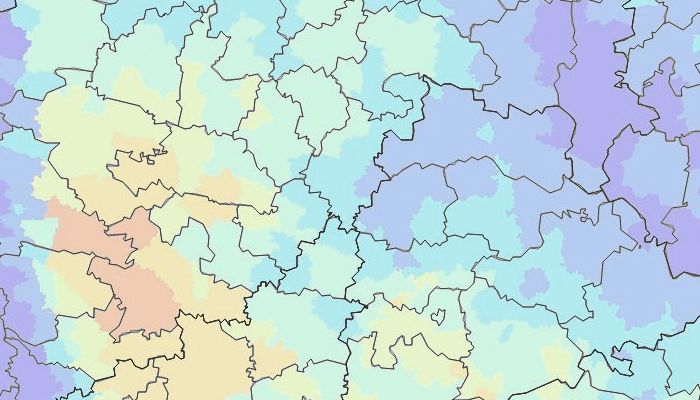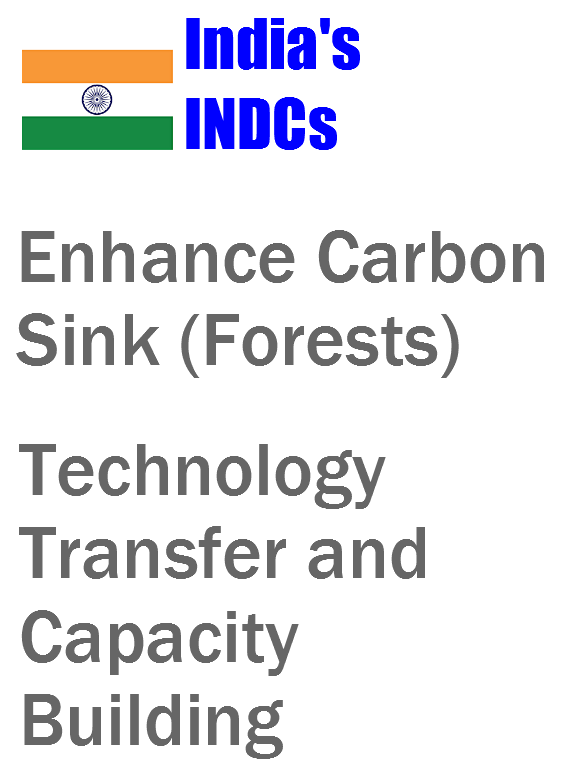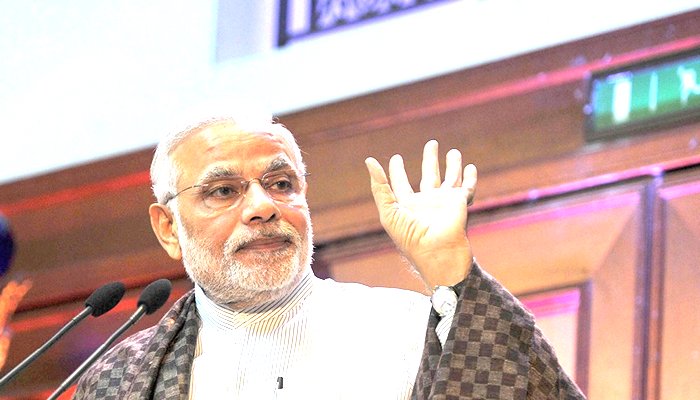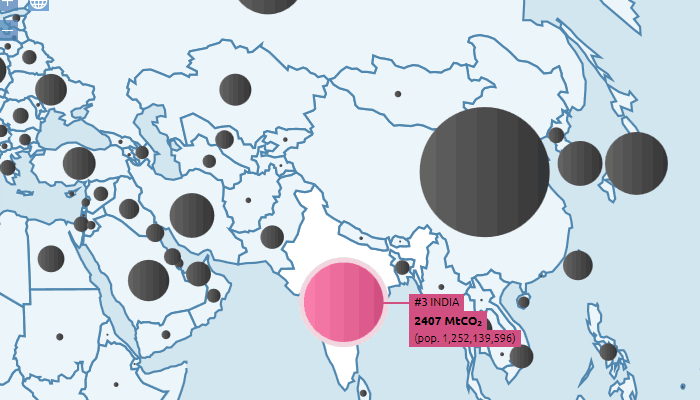
We are pleased to note that the Union Ministry of Finance has issued a discussion paper titled ‘Climate Summit for Enhanced Action: A Financial Perspective from India’, for the 23 September 2019 United Nations Climate Action Summit.
The discussion paper examines various issues on climate finance from India’s point of view. We see that the paper reminds the United Nations that “in order to respond to the worldwide call for stepping up climate actions, it will have to be matched with adequate provision of climate finance from developed countries to developing countries as mandated by the United Nations Framework Convention on Climate Change (UNFCCC) under the principles of common but differentiated responsibilities and equity”.
That means, no dilution of or change in India’s stand on the matter of who is historically responsible for the material in our atmosphere (likewise in our oceans, ice sheets and soils) which has pushed the global parts per million (ppm) of CO2 to 410.45 (the measure for 2019 June, monthly mean, by the National Oceanic and Atmospheric Administration’s Earth System Research Laboratory) and which a year ago was 407.84 ppm.
The paper has said that “climate finance is a key pillar in enabling climate actions” with the most recent estimates for taking climate actions being trillions of US dollars and not billions, but that “the momentum of these flows is insufficient and inadequate”. Referring to India’s Nationally Determined Contribution, the paper said our NDC is on a “best effort” basis, keeping in mind the developmental imperatives of the country. The year 2023 is when UN member countries will undertake a first global stocktake under the Paris Agreement. At that time, said the paper, “India will be better placed to consider a mid-term assessment of its actions and suitably recalibrate through re-examination and improvement” while for now, “India may only be in a position to elaborate or clarify its post 2020 climate actions already pledged in its NDC”.
Global Climate Fund (GCF) finance to India as per the latest available information amounts to only US$ 177 million. This is literally less than peanuts, INR 1,258 crore – the Union Territory of Pondicherry spent INR 2,720 crore just on social sector expenditure in 2017-18. Furthermore, limited as it is, the GCF is now facing withdrawal of some earlier promised sums. That is why the paper says, “the GCF is yet to reach a meaningful stage”. We fully agree.
In 2015, developed countries published a roadmap for global climate finance to US$ 100 billion, which claimed that public climate finance levels had reached US$ 41 billion per year in 2013-14. However, these claims have been contested by many. There have been many critiques on such reporting particularly on credibility, accuracy and fairness. There have also been serious concerns raised about the methodologies of accounting especially the definitional requirements of ‘new and additional’ and ‘grant equivalent’ finance. Suffice to say that the claims of the developed countries do not stand up to scrutiny.
The paper has said that finance needs for India’s are approximately US$ 206 billion (at 2014-15 prices) between 2015 and 2030 for implementing adaptation actions in key areas like agriculture, forestry, fisheries, infrastructure, water resources and ecosystems. Apart from this, there will be additional investments needed for strengthening resilience and disaster management. (RG)




 The Government of India has said that the country’s Intended Nationally Determined Contributions (INDCs) are balanced and comprehensive. In official statements, the government said that INDCs include reductions in the emissions intensity of its GDP by 33 to 35 per cent by 2030 from 2005 level and to create an additional carbon sink of 2.5 to 3 billion tonnes of CO2 equivalent through additional forest and tree cover by 2030. India has also decided to anchor a global solar alliance, INSPA (International Agency for Solar Policy & Application), of all countries located in between Tropic of Cancer and Tropic of Capricorn.
The Government of India has said that the country’s Intended Nationally Determined Contributions (INDCs) are balanced and comprehensive. In official statements, the government said that INDCs include reductions in the emissions intensity of its GDP by 33 to 35 per cent by 2030 from 2005 level and to create an additional carbon sink of 2.5 to 3 billion tonnes of CO2 equivalent through additional forest and tree cover by 2030. India has also decided to anchor a global solar alliance, INSPA (International Agency for Solar Policy & Application), of all countries located in between Tropic of Cancer and Tropic of Capricorn. The INDCs centre around India’s policies and programmes on promotion of clean energy, especially renewable energ
The INDCs centre around India’s policies and programmes on promotion of clean energy, especially renewable energ
 The INDCs outline the post-2020 climate actions they intend to take under a new international agreement. The INDCs document is prepared with a view to taking forward the Prime Minister’s vision of a sustainable lifestyle and climate justice to protect the poor and vulnerable from adverse impacts of climate change. Ministry of Environment, Forest and Climate Change adopted an inclusive process for preparation of India’s INDCs. It held stakeholder consultations with the specific involvement of the key Ministries and State Governments. Interactions were also held with civil society organisations, thinktanks and technical & academic institutions of eminence. The Ministry had commissioned Greenhouse Gas (GHG) modeling studies for projections of GHG emissions till 2050 with a decadal gap. The gist of all these consultations & studies were taken on board before submitting India’s INDCs. The government zeroed-in on a set of contributions which are comprehensive, balanced, equitable and pragmatic and addresses all the elements including Adaptation, Mitigation, Finance, Technology Transfer, Capacity Building and Transparency in Action and Support.
The INDCs outline the post-2020 climate actions they intend to take under a new international agreement. The INDCs document is prepared with a view to taking forward the Prime Minister’s vision of a sustainable lifestyle and climate justice to protect the poor and vulnerable from adverse impacts of climate change. Ministry of Environment, Forest and Climate Change adopted an inclusive process for preparation of India’s INDCs. It held stakeholder consultations with the specific involvement of the key Ministries and State Governments. Interactions were also held with civil society organisations, thinktanks and technical & academic institutions of eminence. The Ministry had commissioned Greenhouse Gas (GHG) modeling studies for projections of GHG emissions till 2050 with a decadal gap. The gist of all these consultations & studies were taken on board before submitting India’s INDCs. The government zeroed-in on a set of contributions which are comprehensive, balanced, equitable and pragmatic and addresses all the elements including Adaptation, Mitigation, Finance, Technology Transfer, Capacity Building and Transparency in Action and Support. Planned actions and economic reforms have contributed positively to the rapidly declining growth rate of energy intensity in India.
Planned actions and economic reforms have contributed positively to the rapidly declining growth rate of energy intensity in India.  India has adopted several ambitious measures for clean and renewable energy, energy efficiency in various sectors of industries, achieving lower emission intensity in the automobile and transport sector, non-fossil based electricity generation and building sector based on energy conservation. Thrust on renewable energy, promotion of clean energy, enhancing energy efficiency, developing climate resilient urban centres and sustainable green transportation network are some of the measures for achieving this goal.
India has adopted several ambitious measures for clean and renewable energy, energy efficiency in various sectors of industries, achieving lower emission intensity in the automobile and transport sector, non-fossil based electricity generation and building sector based on energy conservation. Thrust on renewable energy, promotion of clean energy, enhancing energy efficiency, developing climate resilient urban centres and sustainable green transportation network are some of the measures for achieving this goal. Solar power in India is poised to grow significantly with Solar Mission as a major initiative of the Government of India. A scheme for development of 25 Solar Parks, Ultra Mega Solar Power Projects, canal top solar projects and one hundred thousand solar pumps for farmers is at different stages of implementation. The Government’s goal of ‘Electricity for All’ is sought to be achieved by the above programs that would require huge investments, infusion of new technology, availability of nuclear fuel and international support.
Solar power in India is poised to grow significantly with Solar Mission as a major initiative of the Government of India. A scheme for development of 25 Solar Parks, Ultra Mega Solar Power Projects, canal top solar projects and one hundred thousand solar pumps for farmers is at different stages of implementation. The Government’s goal of ‘Electricity for All’ is sought to be achieved by the above programs that would require huge investments, infusion of new technology, availability of nuclear fuel and international support. The energy efficiency of thermal power plants will be systematically and statutorily improved. Over one million medium and small enterprises will be involved in the Zero Defect Zero Effect Scheme to improve their quality, energy efficiency, enhance resource efficiency, pollution control, waste management and use of renewable energy.
The energy efficiency of thermal power plants will be systematically and statutorily improved. Over one million medium and small enterprises will be involved in the Zero Defect Zero Effect Scheme to improve their quality, energy efficiency, enhance resource efficiency, pollution control, waste management and use of renewable energy. The range of ecosystem goods and services provided by forests include carbon sequestration and storage. Despite the significant opportunity costs, India is one of the few countries where forest and tree cover has increased in recent years and the total forest and tree cover amounts to 24% percent of the geographical area of the country. Over the past two decades progressive national forestry legislations and policies of India have transformed India’s forests into a net sink of CO2. With its focus on sustainable forest management, afforestation and regulating diversion of forest land for non-forest purpose, India plans to increase its carbon stock. Government of India’s long term goal is to increase its forest cover through a planned afforestation drive which includes number of programmes and initiatives like Green India Mission, green highways policy, financial incentive for forests, plantation along rivers, REDD-Plus & Other Policies and Compensatory Afforestation Fund Management and Planning Authority
The range of ecosystem goods and services provided by forests include carbon sequestration and storage. Despite the significant opportunity costs, India is one of the few countries where forest and tree cover has increased in recent years and the total forest and tree cover amounts to 24% percent of the geographical area of the country. Over the past two decades progressive national forestry legislations and policies of India have transformed India’s forests into a net sink of CO2. With its focus on sustainable forest management, afforestation and regulating diversion of forest land for non-forest purpose, India plans to increase its carbon stock. Government of India’s long term goal is to increase its forest cover through a planned afforestation drive which includes number of programmes and initiatives like Green India Mission, green highways policy, financial incentive for forests, plantation along rivers, REDD-Plus & Other Policies and Compensatory Afforestation Fund Management and Planning Authority




 This is unlikely to result in any constructive recognition of all that is linked. A country’s total emissions is one part of the ‘development’ picture and others are at least as important. There are also tons of CO2 emitted per capita (India has often said that its per capita emissions are far below those of the West). And there is per capita consumption of electricity (which is still mainly generated by burning coal).
This is unlikely to result in any constructive recognition of all that is linked. A country’s total emissions is one part of the ‘development’ picture and others are at least as important. There are also tons of CO2 emitted per capita (India has often said that its per capita emissions are far below those of the West). And there is per capita consumption of electricity (which is still mainly generated by burning coal). Thus the message to policy-makers is clear – what counts is what you do at home, in states and districts. The expectation that “international cooperation” should guide effective adaptation at all levels is no longer (and in our view has never been) tenable.
Thus the message to policy-makers is clear – what counts is what you do at home, in states and districts. The expectation that “international cooperation” should guide effective adaptation at all levels is no longer (and in our view has never been) tenable.


